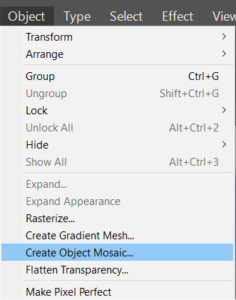

- #IMPORT AI INTO QUARTZCODE HOW TO#
- #IMPORT AI INTO QUARTZCODE CODE#
- #IMPORT AI INTO QUARTZCODE PLUS#
So I need to be able to quickly find/see what content is in each layer.ģ. By the time you get to layer 10, you forgotten what you put in layer 1. In illustrator I may create 20 different layers with sub-layers. How do you see what is in each layer in InkScape? You may reply you will see them on the canvas, but this doesn't help. Anyways, being able to import/open a vector image with all the layers and sub-layers is the first step.Ģ. I was surprised I could not find my answer making me ask "is Inkscape a Vector Editor? - especially since it didn't even see or recognize a EPS file.
#IMPORT AI INTO QUARTZCODE HOW TO#
HOPEFULLY THE IMAGES BELOW EXPLAIN BETTER - I DID NOT KNOW HOW TO EMBED THE IMAGES IN THE POST SO I ATTACHED THEM.īefore I go on, the above is probably where I did tons of googling. SVG), in Inkscape it opens the file but none of the layers or sub-layers were created in Inkscape. Even worse, when trying to open a EPS file, Inkscape did not show any EPS files in the Open Dialogue Box.įor example, in Illustrator, I may have a 10 LAYERS and under each Layer several more sub-layers for color, specific content, shapes, lines, etc. Can Inkscape import EPS, SVG, AI files and all the layers and sub-layers? I tried opening all 3 formats but none of the layers and sub-layers open in Inkscape.
#IMPORT AI INTO QUARTZCODE PLUS#
It would be a plus if someone here understood both Illustrator and Inkscape but if not, my hope is understanding Inkscape is enough. By the way, I did the google thing but the research was a bust - mostly because the answers were not straight forward. I'm on a deadline and running out of time so I turn here hoping I can get my answers. At the last minute, I was told I needed to use Inkscape instead of Illustrator in my teaching. The course has to do with whiteboard animation and one of the tools I use is Adobe Illustrator. Recently I was contracted to teach a course. Make sure that job class you specified in step 2 points to this file. įinally, write the actual implementation. If you are using Maven, add this to your pom.xml to add Spring and Quartz dependency to your project. You can register multipleĪdd this snippet to your Spring xml file. Runs in the background and invokes ‘triggers’. They differ in the way you specify scheduling information.įor example, CronTrigger takes a cronexpression, whereas SimpleTriggerģ) The Scheduler: this is the actual service which There are different types of triggers (e.g.
#IMPORT AI INTO QUARTZCODE CODE#
There are 3 concepts when configuring your scheduled jobs:ġ) The Job: the java code that you want to run in the background periodicallyĢ) A Trigger: a trigger adds scheduling information If you are already using Spring, you probably already have this To initialize Spring in your webapp, add this snippet to your web.xmlįile. The steps needed for scheduling, with code snippets required for each In Java web applications, you can add scheduling toĪny app in 4 simple steps using Spring and Quartz. On Linux/Unix systems, background processes can be run using the “cronjob” Some applications need to run periodic jobs in the background.


 0 kommentar(er)
0 kommentar(er)
